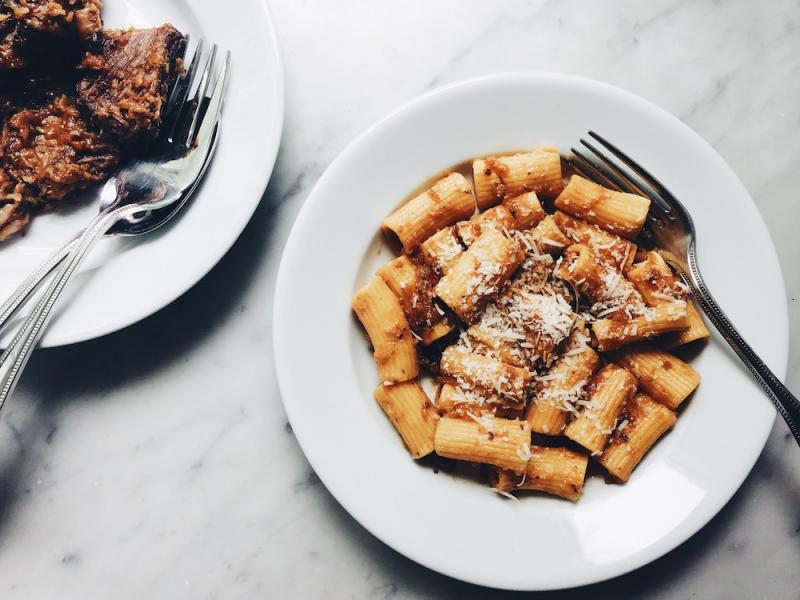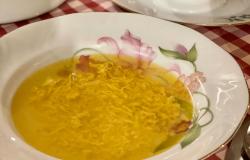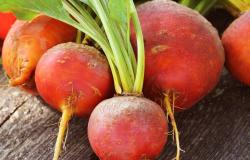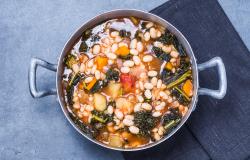La Genovese

Naples is famous the world over for its pizza. But among Neapolitans there is another dish that is held in equally high (if not higher) esteem. It is called La Genovese, and it is one of the most luscious sauces ever to grace a plate of pasta. It’s composed almost entirely of onions, enriched with a little beef and wine, and in spite of its name it has nothing to do with Genoa.
The first time I had La Genovese was during a trip through Campania when I was about 11 years old. My family stopped to visit dear friends in Caserta, just north of Naples. We gathered around their small dining room table while our hostess served a seemingly simple home-cooked pranzo. The pasta was a short cut—maybe ziti—and it was dressed in a rather undistinguished brown colored sauce, without a hint of tomato or basil, those two signature ingredients of Neapolitan cuisine. But all it took was one bite to reel me in. The sauce was creamy in texture and rich beyond rich in flavor, tasting of caramelized onions and pot roast, savory but also sweet. The beef that had been braised in the onions and wine was served as the secondo, thinly sliced with more sauce spooned on top.
That childhood taste memory stuck with me, though I didn’t know the dish had a name until years later when I was given a copy of Arthur Schwartz’s cookbook “Naples at Table.” Within the book’s pages I found not one, but three recipes for la Genovese. Schwartz’s book described it as “one of the glories of the Neapolitan kitchen, a dish proudly held up as proof that there was original, even fine cooking in Naples before the tomato.”
The sauce’s origin remains something of a mystery. One popular theory holds that the recipe arrived in Naples in the 16th Century, with Genovese merchants and their private chefs. It may have evolved from brasato, classic Italian pot roast.
It takes patience to make a good Genovese. First, there is the slicing of the onions. They should be paper-thin and, ideally, sliced by hand—traditionalists maintain that using a food processer bruises the onions and releases bitter juices. If you have one, a mandoline makes quick work of it. The onions are then cooked very slowly in their own juices, along with a bit of prosciutto or pancetta, a smattering of herbs, and a smallish piece of beef, usually an inexpensive, flavorful braising cut like chuck roast. This process takes hours, though it’s mostly hands off once you’ve got the onions sliced and the meat browned. Finally, towards the end of cooking, a judicious amount of white wine is added to the pot to enrich the flavor of the sauce.
As with all Italian dishes, each cook brings his or her own signature to la Genovese. In Campania, many cooks search out ramata di Montoro, a yellow onion with copper-colored skin, to make their Genovese. But a good basic yellow onion produces a fine sauce, too. Some add a touch of tomato to their sauce. Ziti is the most traditional choice of pasta for this dish, or, if you can find them, “candele,” which are long ziti. The long, tubular noodles are hand-broken before cooking. Any splinters and shards from breaking are cooked along with the larger pieces.
Makes 6 servings
Peel the onions and cut them in half. Slice each half into paper-thin half-moons, transferring them to a large bowl as you go. Set aside.
Season the chuck roast with a little salt and pepper. Warm the olive oil in a Dutch oven or other heavy-bottomed pot over medium heat. Brown the roast for 4 to 5 minutes until nicely browned on all sides. Transfer the meat to a plate.
Add the carrot, celery, pancetta, and herbs to the pot and sauté, stirring often, for 5 minutes, until the vegetables are shiny and the pancetta is lightly browned. Return the meat to the pot and add the onions, arranging them over the meat. Cover and simmer for about 20 minutes, until the onions have started to wilt and release their juices. Reduce the heat to low and let the meat and vegetables simmer gently, covered, for 40 minutes.
Uncover, turn the meat, re-cover, and continue to cook at a very gentle simmer, until the meat is tender enough to pierce through the center with a fork—about 2 hours. Carefully remove the meat to a cutting board and cover with foil to keep warm. Continue to cook the onions on very low heat for at least 1 more hour, until they are a beautiful golden-brown and the pancetta has all but dissolved.
Raise the heat to medium and stir in 1/4 cup of the wine into the onions. Continue to cook and stir for 3 to 5 minutes, until the wine has been absorbed. Add the rest of the wine in this way, 1/4 cup at a time, until you have added it all. Lower the heat once more and cook a few minutes longer to allow the flavors to merge. The sauce should be a rich golden brown, with a creamy texture. At this point you can pass it through a food mill if you prefer a completely smooth sauce, but if the onions are properly cooked you shouldn’t need to. (I like a little texture.)
Cook the pasta in a large pot of salted boiling water until al dente. Dress the noodles with the onion sauce, reserving a little of the sauce for the meat. Serve the pasta with lots of freshly grated Parmigiano as a first course. Slice the meat and serve it as a second course, with a little onion sauce spooned on top.





